
JOURNAL OF DERMATOLOGICAL TREATMENT
Scope & Guideline
Exploring the forefront of skin health research.
Introduction
Aims and Scopes
- Clinical Efficacy of Treatments:
The journal consistently emphasizes clinical research on the efficacy and safety of various dermatological treatments, including biologics, systemic therapies, and topical agents for conditions such as psoriasis, atopic dermatitis, and hidradenitis suppurativa. - Patient-Centered Research:
A significant focus is placed on understanding patient perspectives, treatment satisfaction, and quality of life, which are crucial for tailoring treatment plans and improving patient outcomes. - Innovative Therapeutic Approaches:
The journal explores new therapeutic modalities, including emerging biologics, combination therapies, and adjunctive treatments, such as phototherapy and novel topical agents, highlighting advancements in personalized medicine. - Systematic Reviews and Meta-Analyses:
It regularly publishes systematic reviews and meta-analyses that synthesize existing literature, providing comprehensive overviews of treatment effectiveness and safety across various dermatological conditions. - Real-World Evidence:
The journal emphasizes the importance of real-world studies that reflect the practical application of treatments in diverse patient populations, enhancing the clinical relevance of published findings.
Trending and Emerging
- Biologics and Targeted Therapies:
There is an increasing emphasis on the efficacy and safety of biologics and targeted therapies for chronic skin conditions, particularly psoriasis and atopic dermatitis, driven by the demand for more effective and personalized treatment options. - Patient-Reported Outcomes:
An emerging trend is the focus on patient-reported outcomes, which assess the impact of dermatological conditions and treatments on patients' quality of life, emphasizing the importance of patient-centered care in dermatology. - Real-World Evidence and Data Analysis:
The journal increasingly publishes studies based on real-world evidence, analyzing treatment patterns, patient adherence, and healthcare costs, which are critical for understanding the practical implications of dermatological therapies. - Interdisciplinary Approaches:
There is a growing interest in interdisciplinary research that incorporates insights from other medical fields, such as immunology and endocrinology, to better understand complex dermatological conditions and their treatments. - Impact of COVID-19 on Dermatology:
In light of the ongoing pandemic, the journal has seen a surge in research exploring the implications of COVID-19 on dermatological practices, treatment adherence, and patient outcomes, reflecting a timely response to contemporary issues.
Declining or Waning
- Traditional Topical Treatments:
There has been a noticeable decrease in publications focusing solely on traditional topical treatments for skin conditions, as the field increasingly shifts towards systemic therapies and biologics that offer more significant and rapid results. - Historical Case Reports:
The frequency of case reports documenting historical treatments or rare conditions has declined, as the journal prioritizes studies that contribute to broader clinical insights and evidence-based practices. - Cosmetic Dermatology:
While cosmetic dermatology remains relevant, there has been a waning emphasis on purely aesthetic treatments, with more focus now directed towards functional and therapeutic aspects of dermatological care. - Basic Science Research:
There is a declining trend in the publication of basic science research not directly linked to clinical outcomes or practical applications, as the journal aims to prioritize studies with immediate relevance to clinical practice. - Acne Treatment Studies:
Research specifically focused on acne treatments has become less frequent, likely due to the saturation of existing knowledge and the emergence of more complex conditions like hidradenitis suppurativa gaining attention.
Similar Journals

AMERICAN JOURNAL OF CLINICAL DERMATOLOGY
Transforming Patient Care through Innovative DiscoveriesThe American Journal of Clinical Dermatology, published by Adis International Ltd, is a leading peer-reviewed journal dedicated to advancing the field of dermatology. With a notable impact factor and a prestigious Q1 rank in both Dermatology and Miscellaneous Medicine categories, this journal stands out as a valuable resource for researchers and clinicians alike, offering cutting-edge insights into clinical practice and innovative treatment strategies. Its comprehensive scope encompasses a broad range of topics within dermatology, addressing both common and rare conditions, with a focus on emerging therapies and technologies. As it converges its publication years from 2000 to 2024, the journal remains an essential platform for disseminating high-quality research to professionals striving to improve patient care and outcomes. With the ISSN 1175-0561 and E-ISSN 1179-1888, the American Journal of Clinical Dermatology facilitates greater accessibility to pivotal findings within the field, making it an indispensable resource for anyone involved in dermatological research and practice.
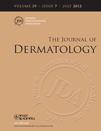
JOURNAL OF DERMATOLOGY
Elevating dermatological knowledge, one study at a time.The Journal of Dermatology, published by Wiley, is a premier academic journal dedicated to advancing the field of dermatology, with its esteemed reputation reflected in its Q1 ranking in Dermatology and a remarkable Q2 ranking in Miscellaneous Medicine as of 2023. Since its inception in 1974, the journal has become a vital resource for researchers, clinicians, and students alike, covering pioneering studies and cutting-edge advancements in skin health and disease. With a Scopus rank of #32 out of 142 in the Dermatology category, placing it in the 77th percentile, the journal underscores its commitment to fostering knowledge and innovation within the dermatological community. Although the journal operates under a subscription model, it remains an essential platform for disseminating impactful research that shapes clinical practice and enhances patient care. For anyone invested in dermatological sciences, Journal of Dermatology serves as a key publication where critical insights and developments are regularly showcased.

JOURNAL OF THE AMERICAN ACADEMY OF DERMATOLOGY
Unveiling the latest in dermatological science and therapy.JOURNAL OF THE AMERICAN ACADEMY OF DERMATOLOGY, published by Mosby-Elsevier, stands at the forefront of dermatological research and education. With an impressive impact factor and categorized as Q1 in Dermatology, this journal has established itself as a pivotal resource for healthcare professionals and researchers in the field. Since its inception in 1979, it has provided a platform for high-quality peer-reviewed articles, contributing significantly to advancements in dermatological science and practice through 2024. The journal commands an honorable position, ranking #8 out of 142 in the Scopus database's medicine dermatology category, placing it in the 94th percentile among its peers. Readers can access a wealth of cutting-edge studies, case reports, and reviews that address a broad spectrum of topics, from clinical dermatology to emerging therapies. In addition, the journal's commitment to excellence ensures it remains an essential tool for students, clinicians, and researchers dedicated to improving skin health and furthering knowledge in dermatology.
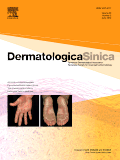
Dermatologica Sinica
Exploring the Frontiers of Dermatology TogetherDermatologica Sinica, published by Wolters Kluwer Medknow Publications, is an esteemed open-access journal in the field of dermatology that has been disseminating critical research since its inception in 2005. With an E-ISSN of 2223-330X and an ISSN of 1027-8117, this journal presents a platform for researchers, clinicians, and students to share cutting-edge findings and advancements in dermatological science. As of 2023, it proudly ranks in the Q2 category of dermatology journals and holds a notable position at rank #62 out of 142 in the Scopus Medicine - Dermatology category, placing it in the 56th percentile for impact. The journal transitioned to an open-access model in 2016, enhancing accessibility and visibility for groundbreaking studies worldwide. With a commitment to fostering innovation in the dermatological community, Dermatologica Sinica aims to advance the understanding and treatment of skin diseases while encouraging scholarly dialogue among practitioners and researchers across the globe.
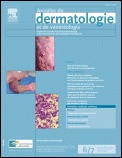
ANNALES DE DERMATOLOGIE ET DE VENEREOLOGIE
Your Gateway to Cutting-edge Dermatological InsightsANNALES DE DERMATOLOGIE ET DE VENEREOLOGIE is a distinguished journal that serves as a vital platform for disseminating innovative research and insightful reviews in the field of dermatology and venereology. Published by MASSON EDITEUR, this journal has been a cornerstone for professionals and researchers since its inception in 1977, offering a wealth of knowledge that spans decades. With its ISSN 0151-9638 and E-ISSN 2214-5451, it is indexed within leading databases, ensuring that the published work reaches a broad audience. The journal currently holds a Q3 ranking in the dermatology category, reflecting its commitment to quality and rigorous peer-review processes. While the journal is not open access, it provides an extensive archive of valuable studies that contribute to advancements in skin health and treatment methodologies. Located in Issy-les-Moulineaux, France, ANNALES DE DERMATOLOGIE ET DE VENEREOLOGIE continues to attract submissions from esteemed professionals, enhancing its reputation as a crucial resource for those dedicated to the ongoing development of dermatological sciences.
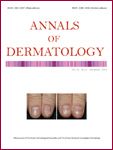
Annals of Dermatology
Pioneering insights into skin health and disease.Annals of Dermatology is a prestigious academic journal published by the Korean Dermatological Association, focusing on the latest research and advancements in the field of dermatology. With a commitment to advancing knowledge in skin health and disease, this journal serves as a vital resource for researchers, clinicians, and students working in dermatology and related disciplines. Since its inception in 1989, it has evolved to consolidate its position in the academic community, boasting a Q2 ranking in the 2023 Dermatology category and a Scopus rank of #87 out of 142, placing it in the 39th percentile. Although it operates under a subscription model, the journal's impact factor reflects its significance in advancing dermatological research, attracting innovative studies and reviews that shape clinical practice. With a publication history extending from 1989 to 1996 and then from 2008 to the present, Annals of Dermatology continues to be an essential publication for those devoted to improving skin health.

Wound Practice and Research
Elevating the standards of wound management practice.Wound Practice and Research, published by CAMBRIDGE MEDIA, is an esteemed journal specializing in the fields of Dermatology, Medical and Surgical Nursing, and Surgery. With a notable focus on advancing knowledge and practice regarding wound care, this journal serves as a vital resource for researchers, clinicians, and students interested in the latest developments and evidence-based practices in wound management. Operating within its converged years from 2019 to 2024, Wound Practice and Research strives to reach academic excellence, currently holding a Q3 ranking in Dermatology and a Q2 ranking in Medical and Surgical Nursing, highlighting its growing influence in these domains. The journal also features robust Scopus rankings, underscoring its commitment to thorough and impactful research dissemination. Although it is a non-open access publication, its rich content and relevant insights make it a worthwhile addition to any medical library, enhancing the ongoing discourse surrounding wound care and treatment methodologies.

AUSTRALASIAN JOURNAL OF DERMATOLOGY
Advancing skin science for a healthier tomorrow.Australasian Journal of Dermatology is a leading publication in the field of dermatology, issued by Wiley since 1951, and reaching an audience of researchers, clinicians, and students interested in the latest advancements and practices in skin health. With an ISSN of 0004-8380 and an E-ISSN of 1440-0960, this journal stands out with its Q2 ranking in both Dermatology and Miscellaneous Medicine, positioning it within the top 61st percentile of its category according to Scopus. Although it does not provide Open Access options, Australasian Journal of Dermatology is committed to disseminating high-quality research that informs clinical practices and promotes scholarly dialogue. By publishing rigorous and peer-reviewed articles focused on various aspects of dermatological science, the journal plays a pivotal role in enhancing the dermatology community's understanding of skin conditions and treatments, making it an invaluable resource for professionals and students alike.
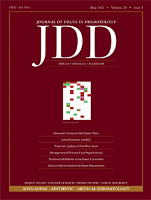
Journal of Drugs in Dermatology
Exploring the future of dermatological pharmacology.Journal of Drugs in Dermatology, an esteemed publication in the field of dermatology, serves as a vital resource for researchers, clinicians, and healthcare professionals dedicated to advancing knowledge and practices in skin-related therapies and treatments. Established in 2002 and published in the United States, this journal focuses on a wide range of topics pertinent to dermatological pharmacology and therapeutics, reflecting contemporary scientific advancements and innovative approaches to patient care. With a strong presence in Scopus rankings, situating it at rank #73 within the dermatology category, and achieving a commendable Q2 quartile classification in both dermatology and general medicine categories, the journal is committed to enhancing understanding of drug efficacy and safety in dermatological conditions. While the journal maintains a traditional access model, its impact factor underscores its significance in the research community, supporting the ongoing dialogue between academia and clinical practice. We invite professionals and students alike to explore the latest findings and contribute to the progressive discourse on dermatological treatments through this important publication.

Dermatologie
Empowering Knowledge in Skin Disease ManagementDermatologie, published by SPRINGER HEIDELBERG, is a prominent journal dedicated to the advancing field of dermatology. With its ISSN 2731-7005 and E-ISSN 2731-7013, this journal has established itself as a valuable resource for researchers, professionals, and students alike. Originating in Germany, the journal focuses on disseminating innovative research from 2022 to 2024, contributing significantly to the understanding of skin health and disease management. Despite its current ranking within the Q3 category in dermatology and a Scopus rank of #88/142, it provides critical insights and advances in clinical practice, epidemiology, and therapeutic modalities. With an emphasis on open discourse, it seeks to foster collaboration among healthcare professionals and researchers, thereby enhancing the quality and accessibility of dermatological research. Engage with Dermatologie to stay at the forefront of the latest advancements in skin-related health issues.